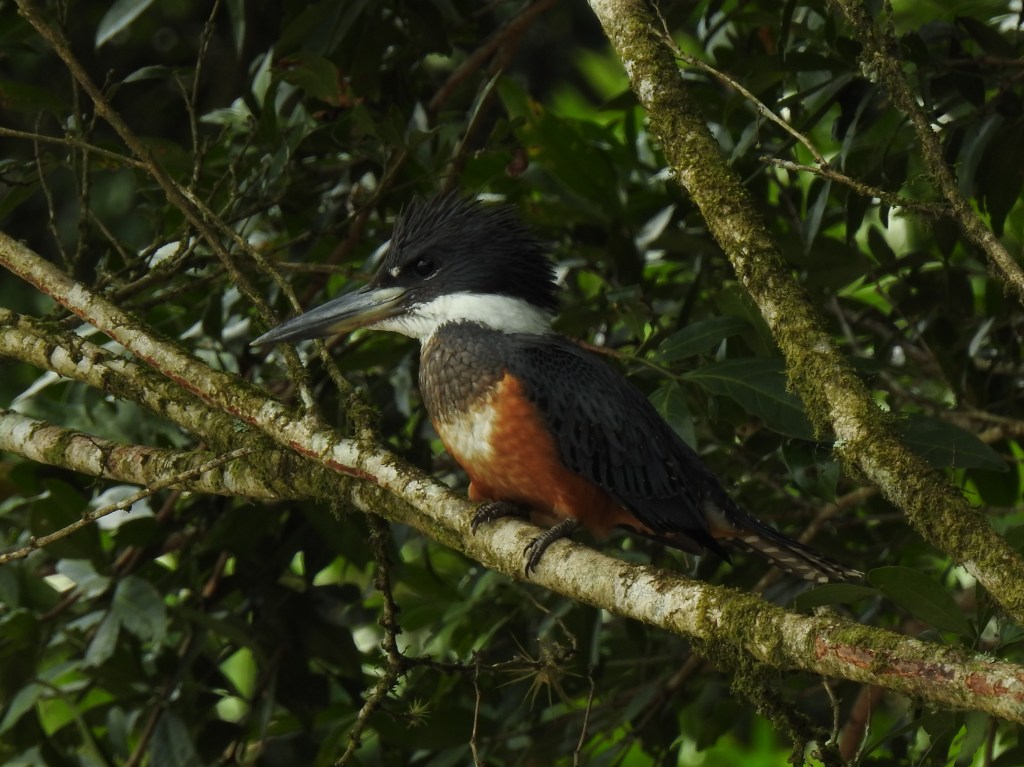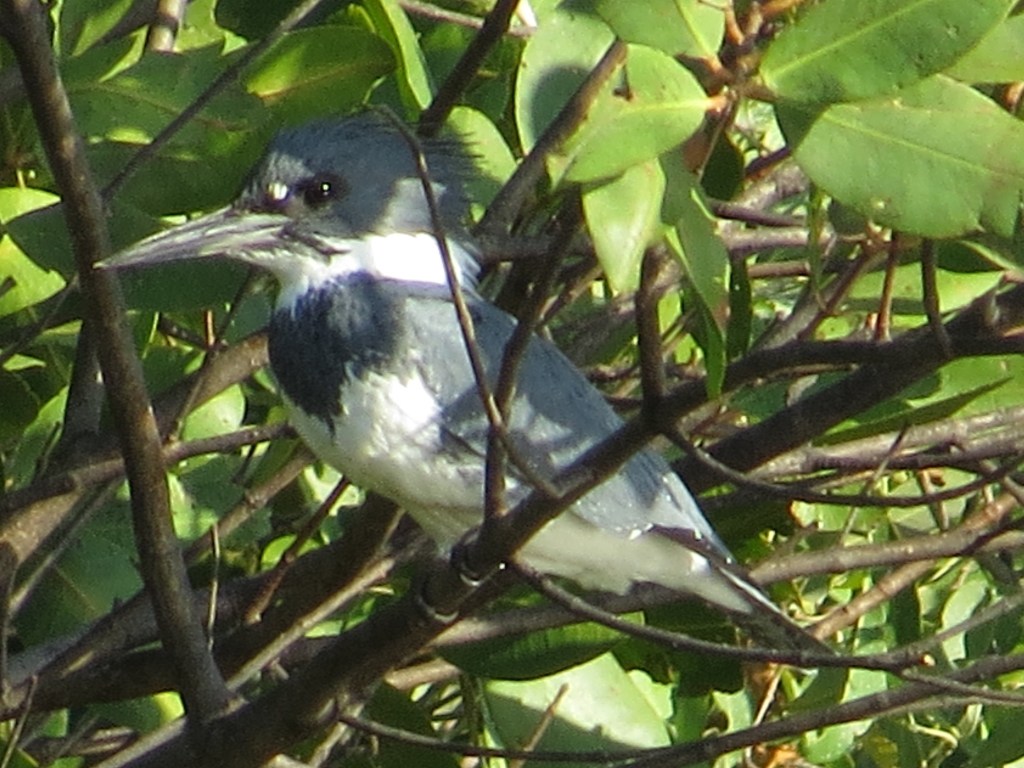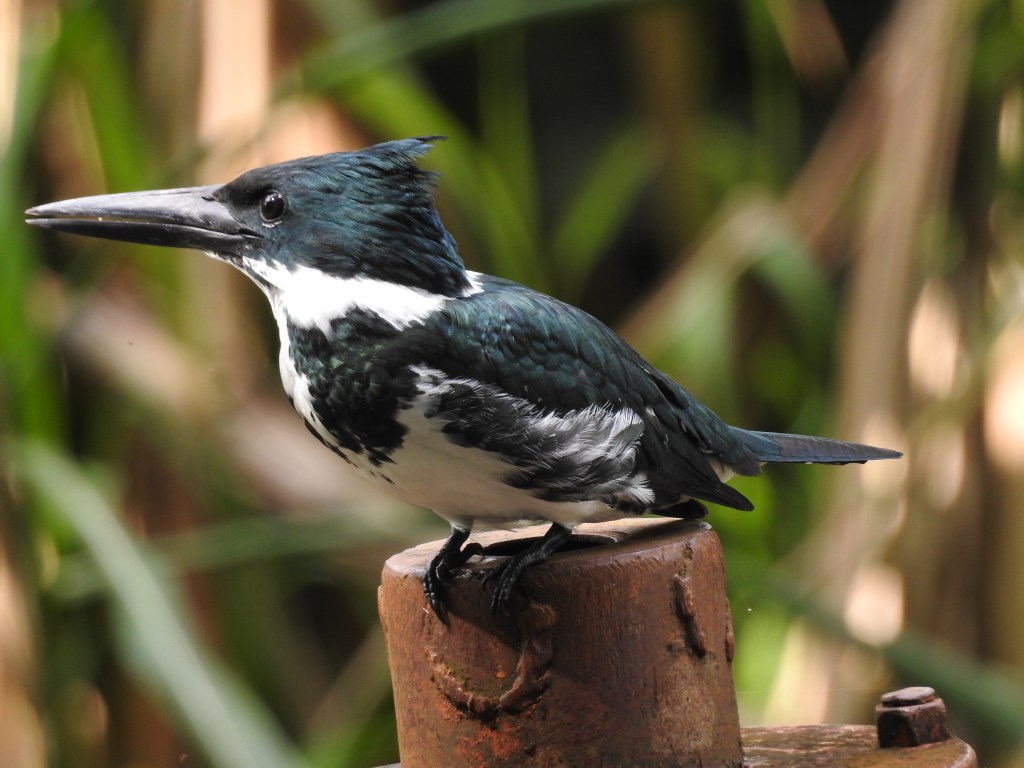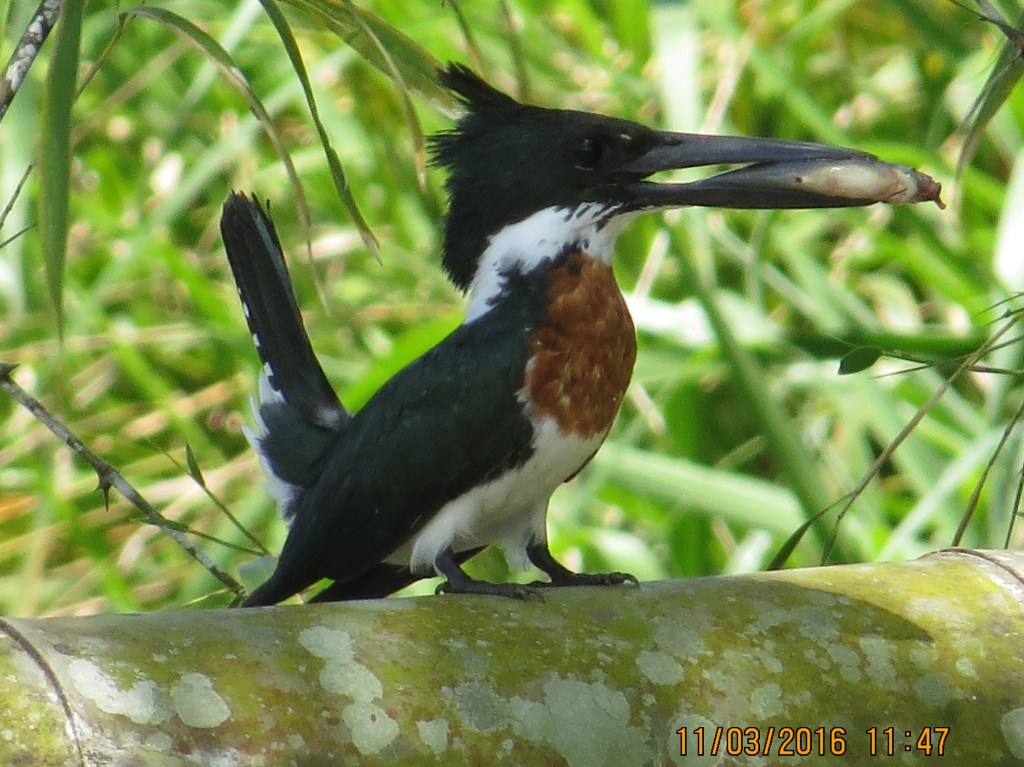Belted Kingfisher (Megaceryle alcyon): Martín pescador norteño; Gürtelfischer; Martin-pêcheur d’Amérique
In Costa Rica you have 6 different kingfisher species to pick from, but only one is a migrant, the rather large (13″) and mostly blue-grey Belted Kingfisher (Megaceryle alcyon), which arrives in mid-September and departs for the north in May. As virtually the only kingfisher north of Mexico, this bird is very familiar to US and Canadian visitors to Costa Rica. Here’s a male of the species from Larry’s home in Minnesota last year:

It is considered fairly common in migration here in Costa Rica, but I myself have rarely found it in our area, where the resident, and even bigger, Ringed Kingfisher (Megaceryle torquatus) (16″) is the only kingfisher with which it is likely to be confused. Its recent appearance at Angostura Dam on the Río Reventazón was a bonus for John and Milena at a location that regularly reports the three Costa Rican kingfisher resident species you’re most likely to encounter: Ringed, Amazon, and Green Kingfisher. Here´s one of John’s pics of the male Belted Kingfisher:

The female Belted Kingfisher does show a rufous belly-band, but the mostly white underparts give it a much different look, as seen here below:

This becomes quite clear when compared to a good look at a the female Ringed Kingfisher, which shows mainly rufous underparts below a blue-grey breast:

To illustrate just one further possible identification problem, I now return to a close-up of a male Belted Kingfisher, which shows the typical blue-grey plumage.

The photo above was taken in northwestern Guanacaste, Costa Rica, but when we compare any Belted Kingfisher (13″) with the only marginally smaller (11″) and very common Amazon Kingfisher (Chloroceryle amazona), as shown here at Atirro near Turrialba …….

…….. we can see that, depending on the lighting conditions and since absolute size is not easy to gauge, it is not always immediately apparent whether we’re looking at a larger, blue-grey Megaceryle species (Belted/Ringed) or one of the smaller, green Chloroceryle species. Note that the Greek word chloro means greenish-coloured and that 4 of the 6 Costa Rican kingfishers are thus termed. This identification problem really exists only in the case of the Belted versus the Amazon Kingfisher, because on the one hand the Ringed is far bigger than the Amazon, while on the other hand the only other likely species, the very common but rather small Green Kingfisher (Chloroceryle americana), measures only 7″. Moreover, confusion is likely only between the male Belted and the female Amazon, because any view of the male Amazon Kingfisher’s rufous upper breast should immediately dispel any doubts. Today’s final photo, of a male Amazon, makes clear that, if seen clearly, it cannot be confused with a Ceryle species:



Wow..what great image of the Kingfisher
LikeLike
I do thank you for your very encouraging comments but I can take only very limited credit for the many fine photos. John and Larry supply the vast majority. I couldn’t manage the blog at all without them because they’re the main attraction without a doubt. Best wishes.
LikeLike